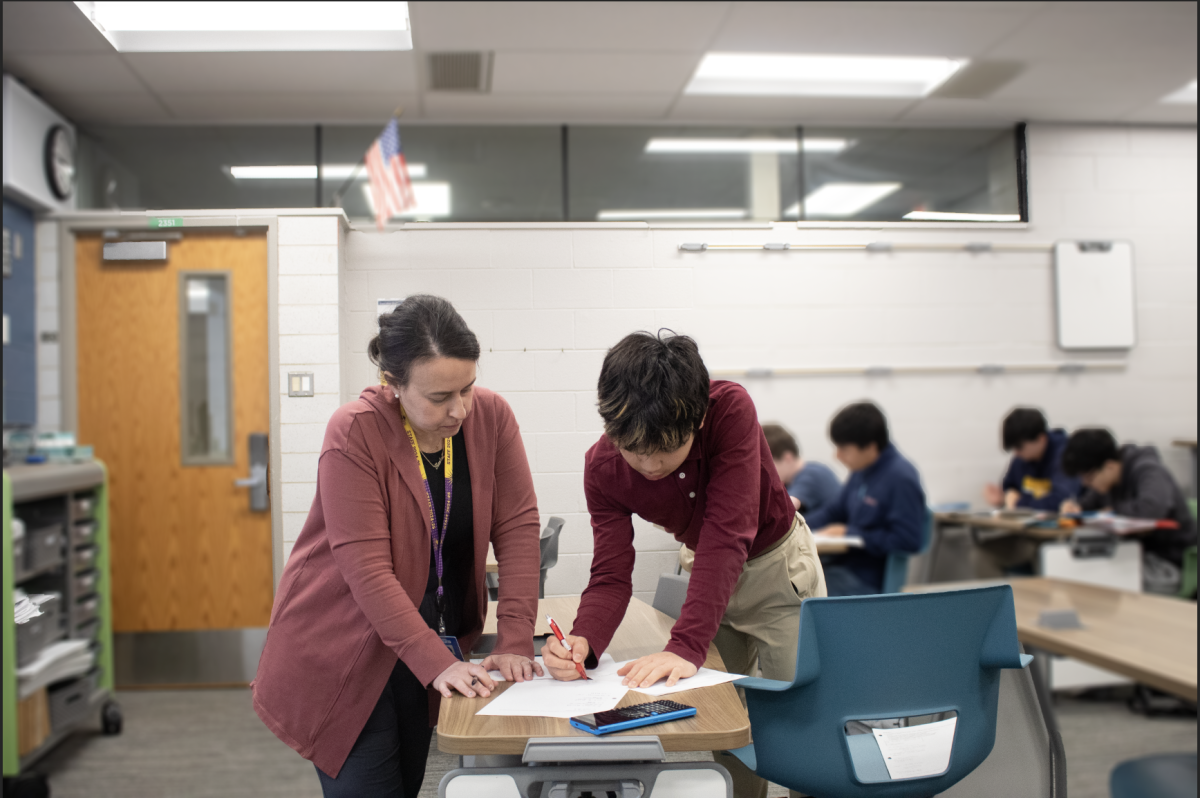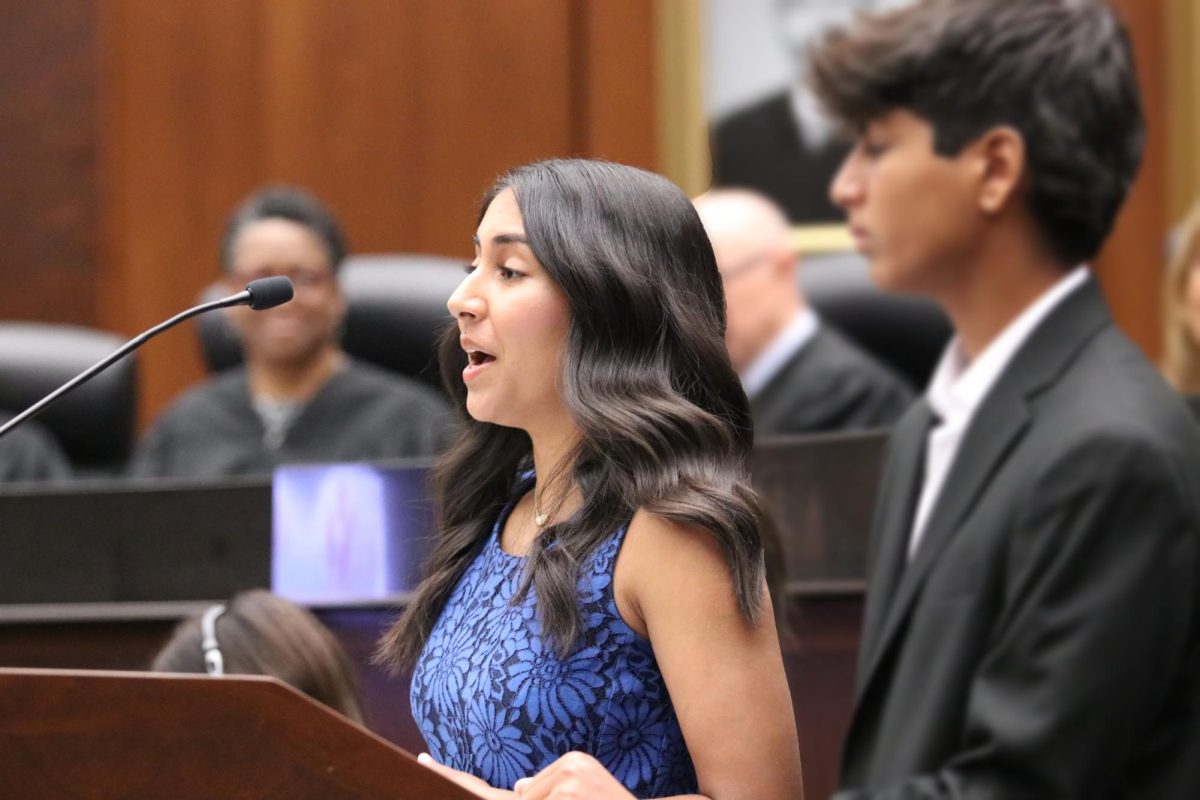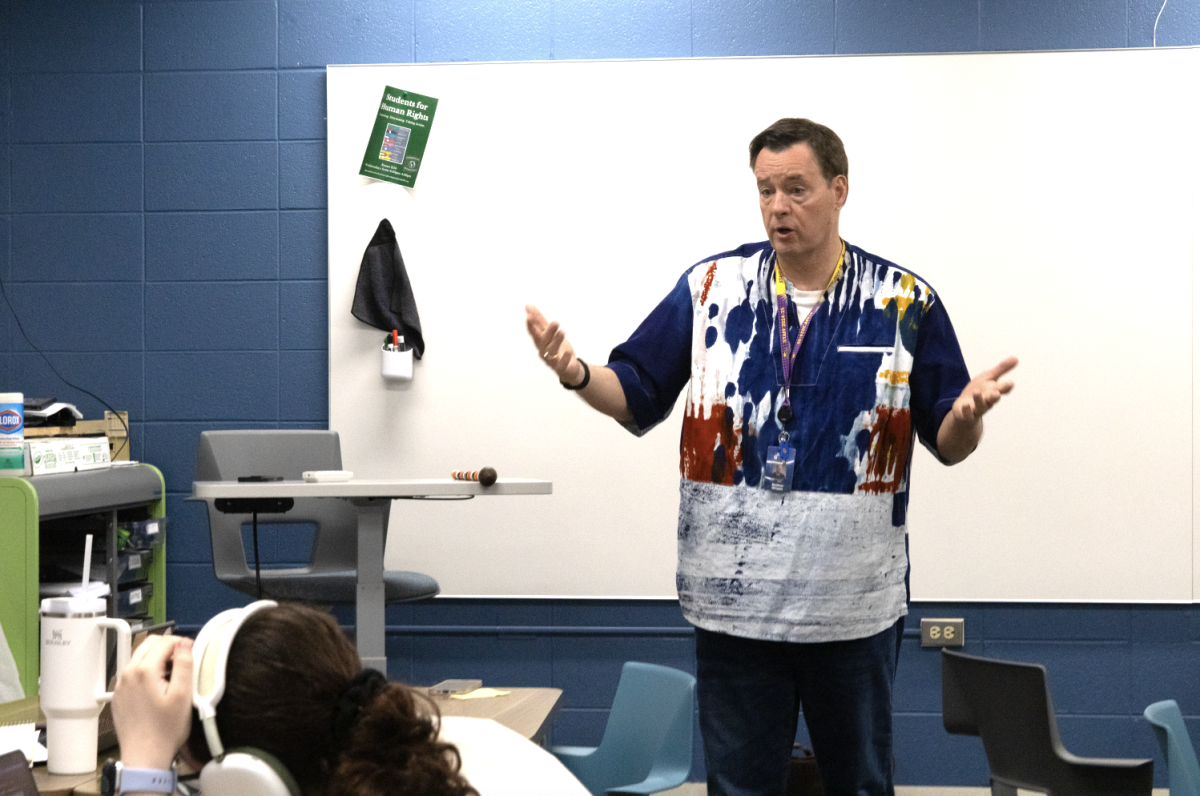Your heart pounds in your chest as you step into class. Carefully, you slip into a seat in the back, head pounding with nerves as you await class to begin. Scrawled on the white board are the words “In-Class Discussion.” For most students, in-class discussions are a routine part of class. But for multilingual students like junior Surym Park, who moved here from South Korea last year in August, they can quickly become a nightmare.
Communicating within an academic environment as a multilingual [ML] student, or a student who is learning english in addition to their first language, can feel daunting and intimidating, junior Jenny Yoon said. In second grade, Yoon moved to Glenview from South Korea, and one of her earliest memories of school here includes a painful experience with the language barrier.
“I felt embarrassed and out of place,” Yoon said. “All the kids seemed to work really hard on whatever they were writing, and I was just sitting there trying to finish [a] sentence because I didn’t know how to spell a word.”
Having to discuss complex concepts in a language that still feels foreign was one of the biggest challenges for her since she moved, Park explained.
“Even if it’s your native language, it’s going to be hard [to phrase things academically],” Park said. “Everything was a challenge, [even just] having a daily conversation,”
Outside of education, another challenge that a language barrier imposes is losing opportunities to socialize with others around you, Park said. The thing she struggled with the most when she moved to the U.S. was a feeling of loneliness.
“There were a lot of cultural differences,” Park said. “There wasn’t a certain thing to connect with people [about since] we have different experiences and [think differently].”
In order to support multilingual [ML] learners, the school should review the classes and extracurriculars they offer, similarly to what they did with the ML science classes, Jenny Morris, ML Physics Teacher, said. The school should continue their effort of making students feel like they belong at South, Morris added.
“[The school could support ML students] just like we would with any student: figuring out how to make them feel like they belong and feel like they’re a part of our school,” Morris said.
The Titan Learning Center (TLC) strives to make all students feel welcome, Joy Cooper, English Teacher and TLC Coordinator said. During the selection process for admitting student tutors, multilingual students have joined the team in order to make everyone feel welcome, Cooper said.
“Several years ago, [the TLC] started exploring our tutor selection process, asking [if] we are limiting ourselves when we’re only looking at students [who speak] English as their native language,” Cooper explained. “It’s important that our student tutor population reflects the diversity of our student body.”
In order to adapt to the large multilingual population at South, the Science Department has restructured their ML courses. These classes are modeled off regular courses, but are image-based and ensure a wide understanding of vocabulary before each unit, Morris said.
“[I] give time for [ML] students to find things in their native language that they’ll encounter in the readings,” Morris said. “It’s called front-loading, or pre-teaching vocabulary, so that [I] can get them to [an equal] understanding.”
Most of Morris’ students speak either Spanish or Mongolian, and have been growing socially while sharing parts of their culture through language with each other, Morris said.
“Some of the Spanish-speaking students were teaching [the] Mongolian-speaking students how to say ‘how old are you’ in Spanish, and the Mongolian-[speaking] students were teaching the Spanish-[speaking] students how to say it [in Mongolian],” Morris described. “[They are] learning about each other’s languages and cultures.”
There were still moments where the language barrier impacted junior Yustyna Lozan, who came to the U.S. two years ago, even though South supported her, she said.
“I don’t have a lot of [English] vocabulary to express my thoughts and emotions,” Lozan said. “When I’m writing essays, it’s kind of hard for me to write without translation.”
Although Lozan has not felt animosity from her native-English speaking peers, many students are often hesitant to converse with ML students, she said. There is a belief that connecting with each other will be difficult, Lozan said.
“Some [students] think that [students who are multilingual] won’t really understand them, so they try to avoid immigrants and people who speak other languages,” Lozan said.
However this should not be the case, Lozan added.
“Don’t be afraid to speak with immigrants,” Lozan said. “They need your attention [and] your help.”














